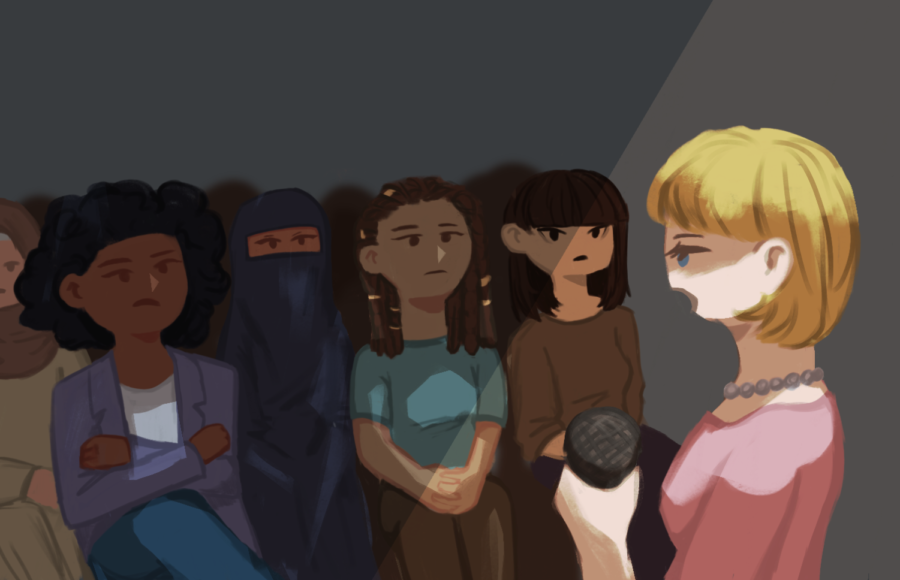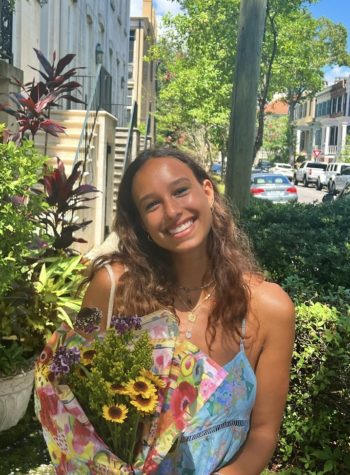Opinion | White feminism is outdated. It’s time to move forward
November 10, 2022
While feminism has come a long way since Susan B. Anthony’s time, it is still problematic and exclusive. Oftentimes, feminism is seen as a one-size-fits-all issue, but this is far from the truth. Mainstream feminism can ignore the nuance that is needed to understand that each woman has a different interpretation of feminist. This is why intersectionality is important. According to Kimberlé Creshshaw, a scholar on civil rights and critical race theory, intersectionality refers to the intersection of the different identities each person holds, and how those identities may overlap and intersect with each other. This causes unique experiences with oppression that people who fit into just one of these categories don’t typically experience.
The problem with mainstream feminism is how it assumes that, when talking about women, they are inherently white. White feminism lacks intersectionality. While the name simply refers to race, it applies to all aspects of someone’s identity. It fails to comprehend how race, class, disability or religion can play a role in someone’s oppression.
However, it should also be noted that being white and a feminist does not make you a White Feminist. White Feminism is feminism that doesn’t recognize the unique challenges women of multiple oppressed groups face. For this article, we will be focusing on women of color.
First, let’s do a little history lesson. When we learn about the suffrage movement in schools, we learn about it through a very white lens. Oftentimes, we are taught that the suffragettes helped all women get the right they otherwise wouldn’t have. This is untrue for women of color, however, because they were widely excluded from this movement and definitely not one of the groups for which the movement fought. In fact, one of the most famous icons of the movement, Anthony, said that she would rather cut off her right arm then fight for Black women to have the right to vote. No Black women were allowed to attend any of the suffrage protests or meetings. At the Women’s Suffrage Parade of 1913, Black women were forced to march separately and behind the white women. Thus, to think that the suffrage movement was for all women is an act of ignorance. Mainstream feminism was built on the exclusion of Black women, and this prejudice must be unlearned for us to move forward.
There are many examples of oppression that are unique to Black women. Black women are more likely to be fetishized and hypersexualized than white women and are often forced to grow up at an early age. Police brutality and anti-blackness are interwoven with the oppression of being a woman. This idea is called misogynoir, referring to the unique racism and sexism Black women face. Misogynoir is rarely discussed in mainstream feminism, because the focus is always issues that center white women. Our curriculum in schools should incorporate a more nuanced and diverse idea of feminism and female oppression, thus including women of color in the movement.
In order for our curriculums to become inclusive, our representation of feminism must expand to include more BIPOC women. Claudette Colvin and Dolores Huerta were two incredible BIPOC activists, yet they are continually left out of our history curriculum. And within AP United States History, the content is even more half-baked. As a result of the curriculums created by the College Board and other organizations that have test-driven mindsets and are often promoters of white supremacist structures themselves, students are not given the wide range of American history that is necessary to fully understand feminism, women’s rights movements, and our individual places in history. It is also important to note that feminism is not the only branch within the women’s rights movements. There are womanists, intersectional feminists, and women who don’t feel included in any of those movements but still want to be apart of the collective movement and the conversation. Students of color who identify as women typically feel pressured to support the movements about which they are taught, like the Women’s Suffrage Movement, but don’t see themselves represented within that history. Yes, learning about Anthony and Elizabeth Cady Stanton is important, but as a Black girl, it makes me feel like women that look like me were nonexistent throughout history. We all know about the outstanding achievements of Rosa Parks and Malala Yousafzai, but why are they some of the only women that are acceptably integrated into the narrative?
White feminism is not only seen within our history— it creeps out through modern women’s movements, dating as recently as the outrage against the overturning of Roe vs. Wade. Similarly to historical movements, we see the pattern of white women advocating for issues that only pertain to them. As someone who identifies as a “feminist,” it is not acceptable for you to be outraged about Roe vs. Wade but not the murder of Breonna Taylor. As someone who advocates for women’s rights, you must also take into account the levels of oppression within the sub groups that comprise all American women. Race, socio-economic status, and sexual orientation play an extremely large role in the oppression that women face. Feminism should be about having those difficult conversations about our unique experiences within womanhood, not disregarding our differences to emphasize a false narrative that all women experience the same oppression simply because we are women.









